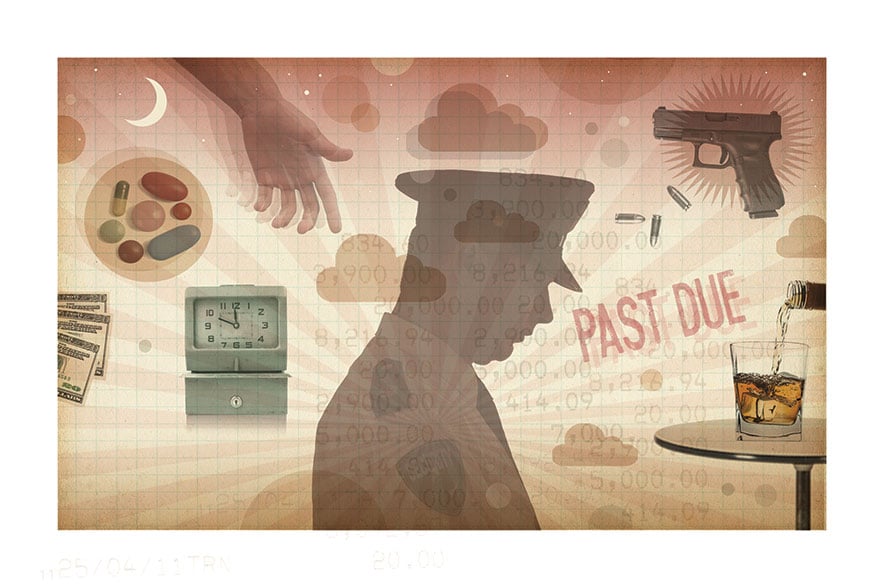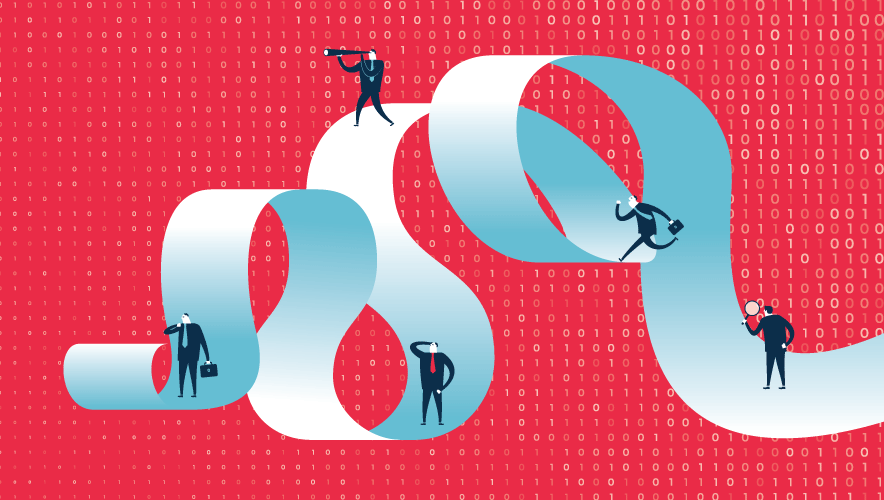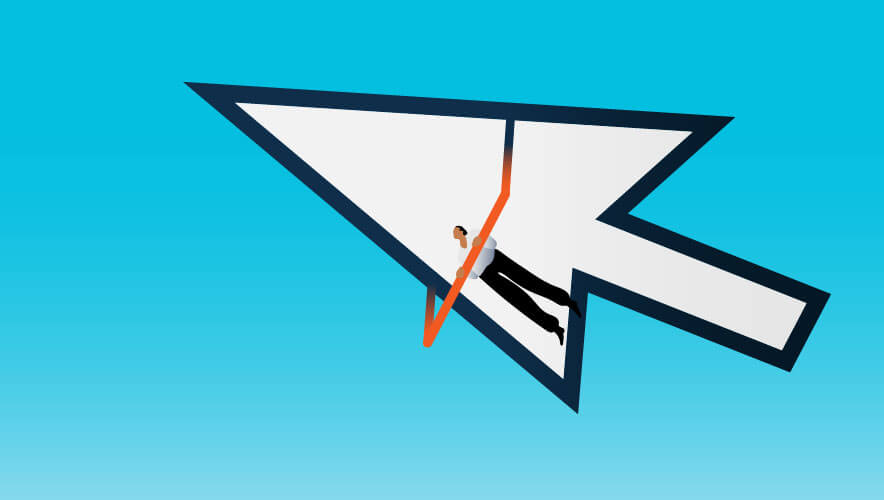Suicide and Security Officers
It’s not easy being a security officer. Simply showing up for work can mean putting one’s life on the line; the possibility of a confrontation with an armed intruder never goes away. When an officer makes a mistake, or is involved in an accident, the media may be quick to broadcast the incident, but everyday bravery and the officer’s contributions to crime reduction and general safety tend to go unrecorded.
In some cases, the challenging conditions surrounding the job can trigger, or at least exacerbate, personal life and health problems like financial struggles, divorce, and dependency on alcohol or drugs as a form of self-medication. In the most tragic cases, a downward spiral can lead to suicide—a serious challenge in the profession, according to some experts and recent research.
A recent study found that those in the protective service professions, which include law enforcement, first responders such as EMTs and firefighters, and security officers, suffered a higher rate of workplace suicide rates than those in other professions.
Conducted by the National Institute for Occupational Safety and Health (NIOSH), the study looked at 1,719 suicides that occurred in U.S. workplaces between 2003 and 2010. The study combined data from two different sources—the U.S. Centers for Disease Control and Prevention and the U.S. Bureau of Labor Statistics.
The researchers found that suicide rates were highest for those in protective service occupations, at 5.3 per 1 million. The next highest rate was for those in farming, fishing, and forestry professions, at 5.1 per 1 million. Ranked by age group, workers aged 65–74 years have the highest rate of suicide, at 2.4.
The data sets used in the NIOSH study do not contain statistical subset breakdowns for security officers as opposed to law enforcement officers and other first responders. However, an earlier study of firearms-related suicide rates in Italy, published in the Giornale Italiano di Medicina del Lavoro, did focus exclusively on security guards. That study found that the guard suicide rate was substantially higher than the rate for the general population.
During the 10-year study period of 1996 to 2006, the average rate of firearms-related suicide among security guards in Italy was 11.7 per 100,000 person-years, significantly higher than both the firearms-related suicide rate of 0.7 and the nonfirearms-related rate of 5.5 for the general population. “These results show that the phenomenon we have described needs attention and specific prevention activities,” the study’s authors wrote.
The suicide problem for security officers has several underlying factors, according to Rick McCann, a 40-year veteran of security and law enforcement who is CEO and founder of Private Officer International, a security advocacy group that keeps a statistical database of security officer deaths.
One key factor, McCann says, is the evolution of the industry. McCann says that, when he started his security career, a much higher percentage of officers were in guardhouses and were tasked with protecting secluded locations. Now, more officers are actively on patrol and thus more likely to be in first responder situations like those faced by law enforcement officers, whether they are dispatched to a scene or already posted there. “They’re much more visible,” he says.
In addition, more security personnel are armed, and, in more than two dozen states and growing, security officers have law enforcement authority, increasing the chances of involvement in high-stress and even traumatizing incidents.
Another contributing factor is that many officers work in conditions that pose mental health challenges in various ways. For example, some officers work night shifts, which can disrupt sleep patterns to the point where biological depression becomes an issue. When night workers sleep through the day and are not exposed to melatonin-regulating sunlight, fatigue and depression can set in.
And day or night, if the facility is closed, a shift can feel isolating. A steady diet of this can be unhealthy. “A lot of people can’t take that loneliness, but yet, they need a paycheck,” McCann says.
Such challenges can be made worse by a sense that there’s no one to commiserate with. Many security officers are former members of the military, and, as such, they may have had the experience of being recognized for their service. “They’re used to being appreciated, at least somewhat,” McCann says. A patron in a bar may buy a veteran a drink as a gesture of thanks, but that rarely happens with a security officer.
Then there is the financial aspect. This can be an important contributing factor to suicide in general; the national suicide rate usually correlates with the state of the economy. During the Great Depression, the U.S. suicide rate shot upward; when economic growth slowed in the late 1960s and 1970s, the suicide rate again increased. During the economic growth period of the 1990s, the rate consistently fell, reaching an all-time low around the time of the tech boom in 1999-2000. Starting in 2001, it started rising again, and it has continued to rise despite the recent economic recovery.
Since contract security remains an industry with low profit margins, compensation for officers is often modest, McCann says. When wages don’t keep pace with the cost of living, low earners experience financial challenges that could snowball into problems like credit issues, mortgage defaults, and car repossession. This can be a significant stress generator. “Not being able to pay the bills, not being appreciated—it wears down on you,” according to McCann.
Generally, suicide is not the result of a lone triggering event, but it is prompted by a series of negative factors—biological, physical, environmental, and situational—that come together, according to Jill Harkavy-Friedman, a clinical psychologist who has studied suicidal behavior for more than 25 years and is now vice president of research for the American Foundation for Suicide Prevention.
“Suicide is very complex. Many factors contribute to it,” she says. Access to weapons can be a contributing factor to increased suicide risk, which would be relevant to armed guards, she added.
In terms of suicide prevention practices, security managers should be mindful when their officers exhibit signs of problems, Harkavy-Friedman counsels. Such indications include irritability, sharp weight fluctuations, aggressive behavior, trouble sleeping, and changes in grooming habits, such as wearing the same shirt three days in a row.
Managers should also take notice if the tone and content of an employee’s conversation turns darker. “Are they talking about death, or morbid things?” she asks.
If an officer is exhibiting troubling behaviors or changes, it is a good idea for the manager to approach and address this in a compassionate and respectful way. “You can start off by saying, ‘I noticed [such and such]…are you doing okay?’” according to Harkavy-Friedman.
If the officer responds along the lines of, “I’m okay, just have a lot on my mind right now,” the manager should make clear that the door is open for a chat about such things.
“We know that talking about the situation can decrease the problem,” she says. Also, the manager should make clear that these types of conversations will not affect the employee’s job status. And if the officer is in need of professional counseling, the manager should point to any resources that exist for help, such as local community mental health clinics.
In the end, Harkavy-Friedman advises everyone, including those working in security, to think of mental health like physical health. Check-ups and maintenance are crucial, and in the same way that caring people will ask friends about their back problems or cholesterol, they should be equally comfortable asking questions like, “How’s your brain? Are you taking care of it?”











